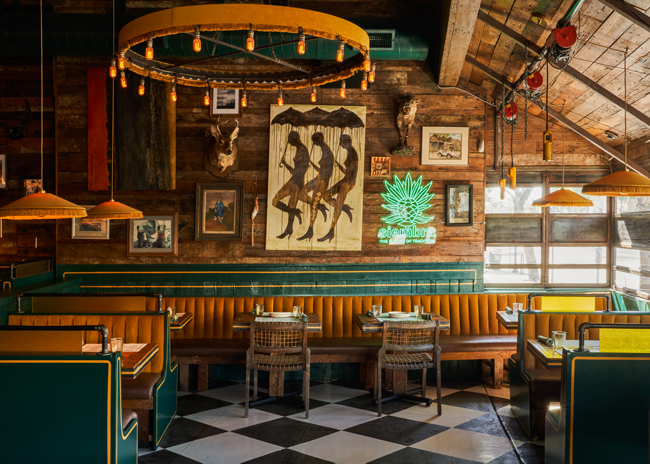In the latest figures from the Centers for Disease Control (2017-2019), 42.4% of American adults are obese. Larger guests may suffer embarrassment because they can’t fit into some of the seats offered or, even worse, suffer physical discomfort and pain if the seats are too restrictive for them.
This is enough to put anyone off, and restaurants that aren’t catering to the increasing size of American bodies are liable to lose revenue as customers take their business to a more accommodating rival.
Changing Seats
A few years ago, a 14-inch-wide barstool was not uncommon. The expectation was that customers were not sitting at a bar for long periods of time. But today we’ve got restaurant developers asking for 24-inch-wide barstools. We have some developers who insist on having a full back on the stool as well. While designers argue that stools open up the space more and open-back chairs are lighter and easier to move around, we’re getting pushback from savvy operators.
We’ve also run into challenges with bar height relative to stool heights, so we’re having to modify the heights of one or the other. Typically, we aim for 11 inches between the top of the stool and the bar, but this could create a pinch point for some customers. One operator asked that we expand the space to 14 inches to avoid discomfort for their larger customers. The softness of the cushion on the stool is another factor. With a firm cushion, it’s easier to determine the ideal height for the bar. Softer cushions mean seat height varies by customer.
The types of chairs restaurant operators prefer are evolving, too. They don’t want scoop chairs or armchairs anymore. Ten to 15 years ago, armchairs in a dining room were quite common — it felt more luxurious. Now, operators are avoiding them because their clientele feel like they’re being squeezed. At the same time, it’s a balancing act as some customers prefer armchairs or feel more comfortable with them, specifically seniors and people with disabilities. Providing a variety of seating options and heights is key.
Specifying firmer furniture can help accommodate overweight customers. This can feel a bit less luxurious. We’ve started suggesting seats with arch spring mountings that have metal springs in the seat. You used to see these springy seats primarily in booths in diners and downscale venues, but they are increasingly common. Someone lighter won’t bend the spring as much, so they sit higher and closer to the table, while a heavier customer will depress the spring and the cushion more, providing needed room.
Because they cost more on a per-square-foot basis, booths may be imperiled in the post-COVID-19 environment. On the other hand, booths naturally isolate one dining group from another, so the air you share is with your own party and not the adjacent table. Of course, staff will have to clean the booth thoroughly between seatings, and the design of booths will need to be looked into carefully. For larger customers, not having a fixed table is one way to make the booth situation better but the furniture swap we’re talking about costs more. As the industry faces one of its greatest struggles in maintaining and then recovering from a pandemic, the most important thing restaurants can do is be as inviting to the greatest number of people — of all shapes and sizes — as possible.
Joshua Zinder, AIA, managing partner of integrated design firm JZA+D in Princeton, N.J.




